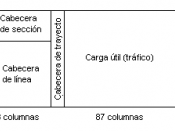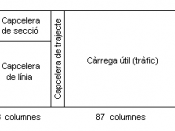WHAT IS SONET? SONET stands for Synchronous Optical NETwork.
SONET/SDH is a synchronous fiber optic based transport format that includes inband network management and overlays the presently existing asynchronous broad band network. SONET and SDH specify common standards for interfaces and protocols which allows the equipment from different vendors to achieve complete functional interoperability in transmitting data over fiber optic cables.
WHY IS SONET IMPORTANT? SONET provides integrated, large bandwidth, high speed transport for electrical signals such as ATM, BISDN, SMDS and Frame Relay. This transport format also reduces maintenance functions while providing greater flexibility, control and centralized management of the network. The SONET/SDH format can carry multiple signals simulteanously using a simplified optically based transmission architecture at less cost than copper wires.
Transport Properties: SONET Frames: The basic SONET Frame structure is known as STS-1 or Sychronous Transport Signal level 1. It has a basic frame rate of 8,000 frames/sec = 51.84Mb/s.
The frame length is 9-rows by 90-columns of octets - total frame size 810 octets. The first three columns are transport overhead, while columns 4-90 are the SPE - Synchronous Payload Envelope with actual transport speed of 50.112Mb/s.
SONET Layers There are 3 layers that control the transport functions in the SONET frame. The first layer is the Section layer that moves data across the media (OSI - 1). The second layer is the Line layer which maps the payload into the electrical STS signal to send to the peer terminating network elements (OSI - 2). The third layer is the Path layer which maps sevices into the preliminary payload prior to STS framing. (OSI - 3).
Virtual Tributaries SONET framing incorporates lower rate signals (less that DS3) into subdivisions of the STS payload. The VT (Virtual Tributary) functions as a separate signal with...


